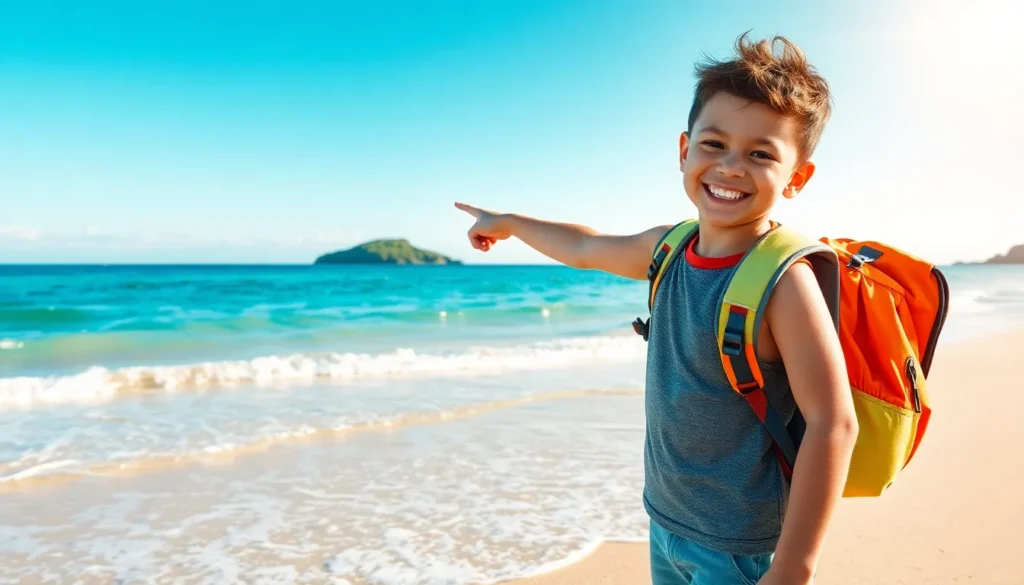Thinking about jetting off to Vietnam? Get ready for a wild ride. Picture this: bustling cities, stunning landscapes, and mouthwatering food that’ll make your taste buds dance. Vietnam is a treasure trove of experiences waiting to be explored. But before you pack your bags and rush to the airport, he or she needs to be equipped with some insider knowledge. This guide isn’t just a list of tips: it’s your passport to a smoother, more enjoyable adventure. So, buckle up as we jump into essential travel tips for an unforgettable journey through Vietnam.
Table of Contents
ToggleBest Time To Visit Vietnam

The weather in Vietnam can be as varied as its landscape, so picking the right time to visit is crucial. Generally speaking, the best time for travel varies by region. For northern Vietnam, particularly Hanoi and Sapa, spring (March to April) and autumn (September to November) are ideal. These months offer pleasant temperatures and breathtaking scenery.
In central Vietnam, places like Hue and Hoi An can be visited year-round, but the dry months from February to August are often preferred. Meanwhile, southern Vietnam, including Ho Chi Minh City and the Mekong Delta, boasts a tropical climate with two main seasons: dry and wet. The dry season from December to April is typically the best time to experience this vibrant region.
No matter when someone visits, it’s worth checking local festivals and holidays, as these can offer fascinating cultural insights, albeit with larger crowds. So be prepared for an adventure told through the colorful backdrop of Vietnam’s festivals.
Cultural Etiquette and Local Customs
Navigating cultural etiquette in Vietnam adds depth to travel experiences. Respect is paramount: visitors should greet locals with a smile and a polite nod. Understanding basic phrases in Vietnamese like ‘Xin chào’ (hello) can go a long way, often resulting in warm smiles in return.
When visiting temples or pagodas, appropriate attire is essential. This means covering shoulders and knees, essentially, fashion police are on duty. Also, it’s customary to remove shoes before entering someone’s home or certain sacred spaces.
Dining etiquette is equally important. When dining with locals, wait for the host to begin eating before digging in. Using chopsticks? Avoid sticking them upright in your rice: it’s reminiscent of incense at funerals. Instead, rest them on the bowl when not in use. Such gestures show respect and understanding of Vietnamese culture.
Essential Packing List
Packing for Vietnam can feel like solving a puzzle, but fear not. Start with lightweight, breathable clothing, perfect for the humid climate. Consider including items like:
- A light jacket for cooler evenings in the north
- Comfortable walking shoes for exploring
- A good quality raincoat or poncho, since the rainy season can catch even the best-prepared off guard.
- A universal power adapter to keep electronic devices charged
- Sunscreen and insect repellent, because nature out there can be fierce.
Don’t forget to have a travel guidebook or app on hand. It can provide invaluable insights and directions that maps may overlook. Also, having a small backpack for day trips is a great way to keep all essentials at your fingertips.
Transportation Options
Getting around in Vietnam is an adventure in itself. There are several transportation methods, catering to varied preferences and budgets.
For longer distances, consider sleeper buses or trains. They’re cost-effective options for traveling between major cities, allowing for views of beautiful landscapes along the way. Taxis and ride-hailing apps like Grab are popular in urban areas, making local travel convenient and quick. Pro tip: always negotiate the fare beforehand for taxis to avoid surprises at the end of the ride.
Biking is another fantastic way to explore cities like Hoi An and Hanoi. Renting a bicycle lets travelers experience the vibrant streets at a slower pace while immersing in local life. Just be prepared for traffic: it can feel like a lively game of Frogger.
Popular Destinations To Explore
Vietnam is packed with must-visit spots, each offering unique experiences.
- Hanoi: The capital buzzes with history, culture, and street food galore. Don’t miss the Hoan Kiem Lake or the bustling Old Quarter.
- Halong Bay: A UNESCO World Heritage site, it’s famous for its emerald waters and limestone islands. A cruise here is a magical escape into nature’s artistry.
- Hoi An: This charming town is known for its well-preserved Ancient Town, with lantern-lit streets and riverside cafes. It’s especially enchanting during its monthly lantern festival.
- Ho Chi Minh City: The bustling southern metropolis, also known as Saigon, offers a mix of modernity and tradition. Visit the War Remnants Museum for a poignant historical perspective.
- Phong Nha-Ke Bang National Park: A paradise for adventurers. Famous for its caves, including the world’s largest, Son Doong. Exploring these natural wonders is an adrenaline junkie’s dream.
Local Cuisine and Dining Etiquette
Vietnamese cuisine is a festival of flavors. With dishes like Pho, Banh Mi, and fresh spring rolls, food lovers will be in heaven. Each region has its specialties: for instance, northern Vietnam leans more towards the savory and aromatic, with dishes that use fewer herbs.
Dining etiquette emphasizes sharing, making meals a communal experience. Expect platters of food on the table, inviting everyone to dig in together. Perhaps surprising for some visitors, eating with chopsticks is expected, and locals generally prefer not to use utensils. For anyone new to using chopsticks, practice on a few grains of rice before the big meal.
Street food is a highlight. Vendors line the streets, selling everything from sizzling pancakes to delicious grilled meats. Just be sure to choose a busy stall: a crowd usually means fresh food. Don’t skip the fresh herbs often served alongside dishes, these add a whole new dimension of flavor.
Safety and Health Precautions
Traveling to Vietnam is generally safe, but a few precautions never hurt anyone. Keep an eye on belongings, particularly in crowded areas. Petty theft can happen in tourist spots, so a trusty crossbody bag can be your best friend.
Health-wise, staying hydrated is crucial. The tropical climate can lead to rapid dehydration, especially when exploring in the heat. Ensure fresh water is always accessible. Being up to date on vaccinations is also wise, having a chat with a healthcare provider before departure can clarify what’s needed.
Finally, packing a small medical kit with essentials like antiseptics and over-the-counter pain relievers is a smart move. Feeling slightly unwell can happen on the road, so having these on hand can save a day.




